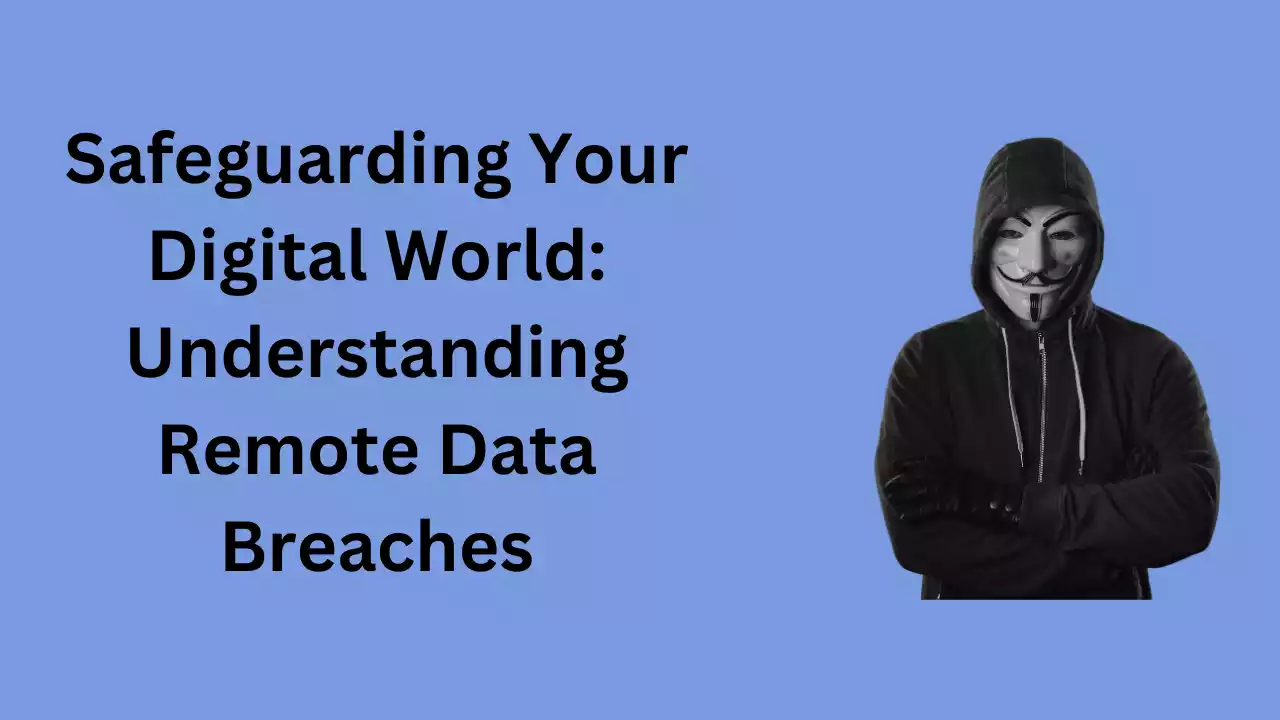In today’s interconnected world, our digital presence is both a convenience and a vulnerability. While technology has made our lives easier in countless ways, it has also opened the door to cyber threats, particularly remote data breaches. These breaches occur when unauthorized individuals or entities gain access to sensitive information stored on our devices or in the cloud without physical proximity. Understanding how these breaches occur and implementing effective safeguards is crucial to protecting your digital assets. In this gearupwindows article, we’ll delve into the world of remote data breaches, explore common tactics used by cybercriminals, and provide actionable steps to fortify your defenses.

What Are Remote Data Breaches?
Remote data breaches occur when cybercriminals exploit vulnerabilities in software, networks, or human behavior to access sensitive information from a distance. Unlike traditional breaches that may involve physical access to devices or premises, remote breaches can occur from anywhere in the world, making them particularly challenging to detect and prevent.
Common Tactics Used by Cybercriminals
1. Phishing Attacks: Phishing remains one of the most prevalent tactics used by cybercriminals to initiate remote data breaches. In a phishing attack, perpetrators masquerade as legitimate entities through email, text messages, or social media, tricking users into disclosing sensitive information such as passwords or financial details.
2. Malware Infections: Malware, including viruses, worms, and ransomware, can infect devices remotely, compromising sensitive data stored on them. Cybercriminals often distribute malware through malicious websites, email attachments, or software vulnerabilities, exploiting unsuspecting users’ trust or security lapses.
3. Brute Force Attacks: In a brute force attack, cybercriminals use automated tools to systematically guess passwords or encryption keys, gaining unauthorized access to systems or accounts. With the increasing computational power available to attackers, brute force attacks pose a significant threat to weak or easily guessable passwords.
4. Remote Desktop Protocol (RDP) Exploitation: RDP is a proprietary protocol developed by Microsoft that allows users to access and control remote computers over a network connection. Cybercriminals exploit vulnerabilities in RDP implementations to gain unauthorized access to systems, often leveraging weak passwords or unpatched software.
Safeguarding Against Remote Data Breaches
1. Implement Strong Password Policies: Use complex, unique passwords for each online account and consider using a reputable password manager to securely store and manage them. Enable multi-factor authentication whenever possible to add an extra layer of security.
2. Stay Vigilant Against Phishing: Be cautious when opening email attachments or clicking on links, especially if they appear suspicious or come from unknown senders. Educate yourself and your employees about common phishing tactics and encourage reporting of suspicious emails.
3. Keep Software Updated: Regularly update your operating system, applications, and antivirus software to patch known vulnerabilities and defend against emerging threats. Enable automatic updates whenever possible to ensure timely protection against security flaws.
4. Secure Remote Access: If you use remote access solutions such as RDP, implement strong authentication mechanisms and restrict access to authorized users only. Consider using virtual private networks (VPNs) to encrypt communications and secure remote connections.
5. Backup Your Data: Regularly backup your important files and data to an external storage device or cloud-based service. In the event of a data breach or ransomware attack, having backups can help restore your information and minimize the impact of the breach.
6. Educate and Train Employees: Invest in cybersecurity awareness training for yourself and your employees to recognize and respond to potential threats effectively. Foster a culture of cybersecurity awareness and encourage proactive communication about security concerns.
By understanding the nature of remote data breaches and implementing proactive security measures, you can safeguard your digital world against cyber threats. Stay informed about emerging threats and best practices in cybersecurity to adapt your defenses accordingly and protect your valuable data from unauthorized access. Remember, when it comes to cybersecurity, prevention is always better than cure.
